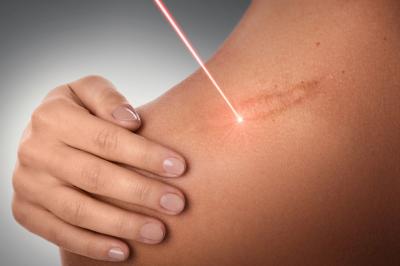How is Cryosurgery Better than Other Methods of Removing Skin Imperfections in Naples, Florida?

Laser Skin Resurfacing- These laser treatments can be used to address a variety of imperfections including skin tone, texture, pigmentation irregularities, and sun and age spots. They can also be used to diminish the appearance of fine lines, deep wrinkles, and acne scars to produce a smooth, blemish-free, and very attractive appearance. People often have a lot of questions about skin imperfections, such as what are they, causes them and how can you get rid of them? Don’t worry! This takes place with one of our experienced, medical practitioners who can assess the imperfection and explain the treatment in detail to you. Natalie’s Skin Solutions will explain everything you need to know about skin imperfections.
Skin imperfections come in a range of sizes and include anything from milia to moles to skin tags. These lumps and bumps can be tiny but annoying. Here explain what skin imperfections are, what causes them, and how you can get rid of them. The most common skin imperfections are milia, moles, and skin tags. They all form naturally and they can be ‘permanent.’ However, thanks to technology, they can also be quickly and easily removed.
Other Methods Of Removing Skin Imperfections in Naples, Florida




Risks Associated with Cryosurgery in Naples, Florida
Cryosurgery does have risks, but they’re considered lower than other cancer treatments, such as surgery and radiation.
The risks associated with cryosurgery include:
blisters
· damage to nearby healthy tissue or vessels
· infections
· a loss of sensation if nerves are affected
· pain
· scarring
· sexual dysfunction
· ulcers
· white skin at the site of the surgery
How to Prepare for a Cryosurgery
Your preparation for cryosurgery depends on the type of cryosurgery being performed. Cryosurgery for skin cancer, which is the main reason cryosurgery is used, requires little preparation on your part.
If your doctor is treating an internal organ with cryosurgery, you’ll probably be given the same instructions that you’d get before traditional surgery. You’ll be asked to fast for 12 hours beforehand and arrange for a ride home from the procedure.
Before the procedure, tell your doctor if you have an allergy to anesthesia, as well as any and all medications you’re taking, including over-the-counter medications and nutritional supplements.
Your doctor will provide you with complete instructions for preparing for the surgery. It’s important that you follow them.
How a Cryosurgery is Performed
Your doctor will place liquid nitrogen on your skin using a cotton swab or spray. Numbing medicine may be used to prevent any pain or discomfort.
If an internal area is being treated, your surgeon will use a scope, which is a flexible tube that can fit into various openings in your body, such as the urethra, rectum, or a surgical incision. The liquid nitrogen is fed to the area under treatment and applied to the targeted cells. The cells freeze, die and then will be slowly absorbed by your body.
Your doctor will use imaging equipment, such as an ultrasound, as a guide for carrying out the procedure.
Following Up After a Cryosurgery
After most cryosurgeries, you can go home the same day. However, you may have to stay in the hospital for a few days if the surgery was done on an internal organ.
After the procedure, you’ll need to care for any incision wounds or places where the skin has been frozen. Your doctor will give you instructions. Care typically involves keeping the area free of contaminants and changing the bandages to prevent infection.
You’ll have follow-up appointments in which your doctor will determine how successful your treatment was, if you have any complications and whether you’ll need more cryotherapy. We know how hard it is, that’s why if you wish to undergo this painless treatment, visit Natalie’s Skin Solutions now! Schedule your complimentary consultation at one of our convenient locations in Fort Myers or Naples today! You can also call (239) 936-SKIN (7546).







